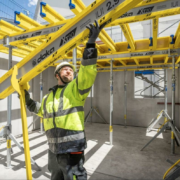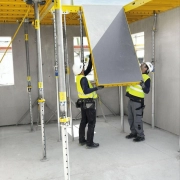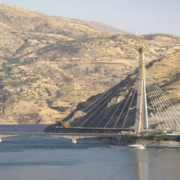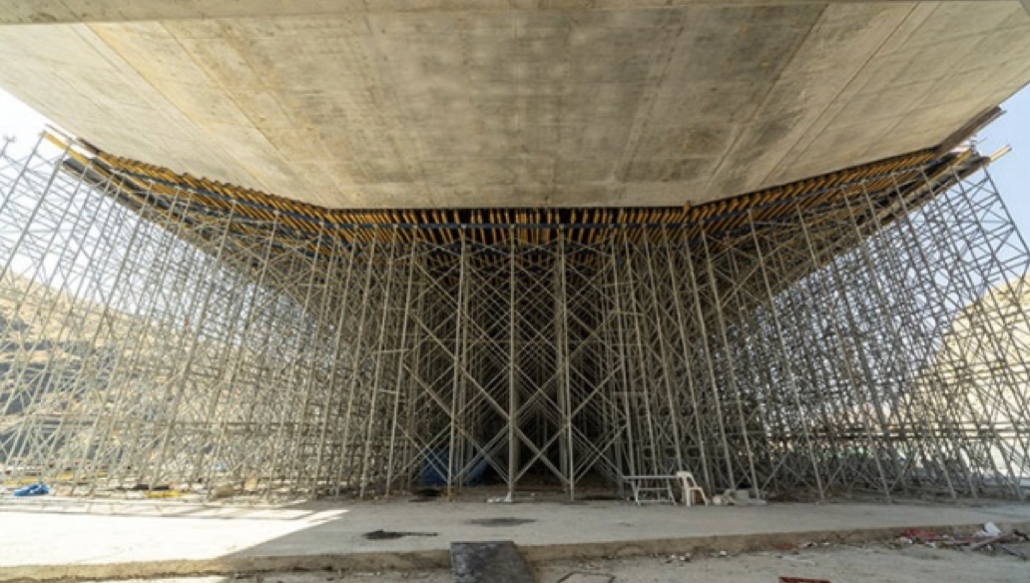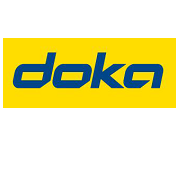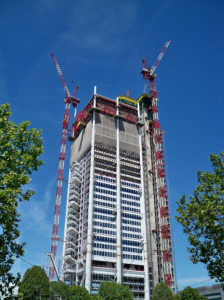Doka to Unveil Innovative Solutions at bauma 2025
At bauma 2025, Doka, together with parent company Umdasch Group, will present more than 40 pioneering innovations in formwork, scaffolding, and other key areas covering the lifecycle of a building object. Visitors to the 5,300 m² exhibition space (booth FN.420 – FN.423) will experience new technologies, products, and materials designed to drive efficiency and boost productivity on the job site, to make concrete construction fit for the future.
Construction productivity has lagged behind other industries for decades. While productivity in manufacturing increased by 90 percent and the overall economy by 50 percent between 2000 and 2022, construction saw only a 10 percent improvement, the equivalent of just 0.4 percent per year (McKinsey, 2024 ).
“We cannot build the future with yesterday’s methods,” says Robert Hauser, CEO of Doka. “The construction industry is facing enormous challenges – above all, it must overcome its productivity stagnation. While we are just one part of the bigger picture, we are committed to creating real value within our field. Through new technologies and, most importantly, the consistent digitalisation of the entire formwork process. Making this possible for our customers must be our ambition – nothing less.”
The growing portfolio of Doka products and services is future-proofing the industry by updating outdated construction methodology. At bauma 2025, Doka will be showcasing more than 40 innovative products and solutions, all designed to help customers boost their productivity. To further highlight its ambitions for the next era of construction, Doka will unveil its vision of a fully digitised formwork process. The focus is on enabling seamless process integration through a connected platform to unlock unparalleled transparency and full control over the entire formwork and pouring workflow, anytime and anywhere.
Automation, Robotics and More
A semi-automated formwork robot, entire digitally controlled products, a new working method for concrete wall construction and more highlights await visitors in the new “smart construction” outdoor area at the Doka booth.
Doka presents a new method for constructing concrete walls: Doka LeanForm is a central pre-assembly platform that, just like an assembly line, allows complete formwork units to be assembled at a safe, controlled workstation, before being lifted into place by a crane. This brings numerous advantages, including shorter distances between storage and workspaces, which minimise transportation needs, reduced search and waiting times on the site, and more. Doka is also presenting a glimpse into the future, as a robot will mobilise and place various components in the pre-assembly platform.
After making its prototype debut at the last show, the DokaXbot Lift has been completely reengineered for bauma 2025. Featuring intuitive ground-level operation, automatic fine adjustments, and compensation for floor unevenness, the DokaXbot Lift now enables the precise positioning of formwork elements up to 5.7 metres high, making overhead work safer and more efficient. The DokaXbot Lift will be showcased in the outdoor area and as part of the live shows in the main hall.
Doka is setting new industry standards in automating of formwork solutions. With the next-generation drive system Doka FormDrive, Doka creates the basis for automated formwork solutions in high-rise and infrastructure construction. The heart of the new system at the high-rise exhibit is a mobile control unit for lifting the climbing system and steering all movements of the wall formwork. This reduces the manual workload while simultaneously increasing safety and productivity

Multiple Premieres in Wall and Slab Formwork
To boost the spread of new, more climate-friendly concrete mixes, Doka has developed an intelligent heated formwork prototype. Through targeted heating, the prototype accelerates the delayed strength development of CO₂-reduced concrete, enabling safe and efficient use on site. Integrated digital sensors allow real-time concrete monitoring to further optimise performance on-site. The prototype will debut at the international fair, following successful trials in research projects and on live construction sites. With this technology, Doka is proving that formwork is more than just a supporting structure: it is a key enabler in the transition to low-carbon concrete and the decarbonisation of construction sites. “As one of the largest GHG emitters worldwide, the construction industry must evolve,” says Hauser. “CO₂-reduced concrete is a key driver of change, and we are committed to supporting a lower carbon construction future, in line with our own ambitious goal of achieving net zero by 2040. We are excited to present our prototype at such an important show.”
Visitors can look forward to even more highlights:
- By integrating circular economy principles, Doka is proving that sustainability and economic efficiency go hand in hand. The Xlife top sheet is the first Doka formwork sheet with a core made entirely from upcycled plastic. Designed for particularly high durability and multiple reuse cycles, it reduces material consumption and maintenance costs, delivering both financial and environmental advantages. At the end of its lifecycle, the sheet is returned to a closed-loop system, where it is processed into new sheet cores.
- When it comes to slab formwork, the DokaXdek system family with the DokaXdek table, DokaXdek panel and DokaXdek I-frame will be presented with latest innovations at the show.
- A new safety upgrade for beam slab formwork with the Safeflex sliding mesh and Safeflex system, sets new standards in stability and safety in both precast and in-situ concrete applications.
To improve efficiency, Doka is introducing new components to its product portfolio: A key highlight is the innovative XT20 beam, which offers 50 percent higher load capacity, resulting in up to 15 percent material and cost savings. Although it has new features, the extra tough XT20 stays within the familiar H20 dimensions without compromising compatibility. Additionally, the new Doka Eurex 20 basic floor prop, combines higher load-bearing capacity with reduced weight, ensuring easier handling and lower costs across all slab systems.
Another major addition to Doka’s formwork portfolio is making its debut. In 2024, Doka acquired Malaysian-based MFE, the market leader for monolithic aluminum formwork. Now, at bauma 2025, Doka is bringing monolithic formwork technology to the exhibition for the first time, demonstrating its impact on modern, high-speed construction.
Raising the Bar in Scaffolding
Doka, together with AT-PAC, the group’s dedicated scaffolding brand, will showcase new scaffolding solutions designed to enhance efficiency and safety for both construction and industrial customers. A dedicated area to the new scaffolding product lines will feature developments in façade scaffolding, access systems, and expanded shoring applications, increasing the versatility of Ringlock scaffolding for construction projects. These new product lines will be showcased alongside an impressive 30-meter scaffolding tower with an integrated viewing platform, a standout booth feature that offers visitors a breathtaking panoramic view of the bauma fairgrounds.
Lighter and More Versatile Shoring Solutions
Doka will present the next generation of shoring systems, designed to meet the highest industry standards. Debuting globally, the new DokaXshore is a lightweight, tool-free shoring system engineered for maximum efficiency with a 100 kN leg load capacity. The innovative system is built for projects that demand speed of assembly, ease of use, and high safety.
Meanwhile, the Doka UniKit heavy shoring system has already proven itself on high-rise, bridge, tunnel, power plant, and industrial jobsites. UniKit will be on display at the scaffolding tower exhibit and in the product hall, where Doka will showcase its core components. Two major upgrades will be revealed that will soon enhance the versatility of this universal engineering kit: A wall-mounted support that transfers up to 400 kN, even at very short distances from the ground, and the full integration of UniKit heavy shoring with Ringlock scaffolding, enabling safe access and a secure workplace at any height.
Under One Roof
Visitors can embark on an immersive journey through a dynamic indoor exhibition shared with parent company Umdasch Group. Features include an exciting outdoor area dedicated to smart construction and the striking Ringlock scaffolding tower. Throughout the event, which runs from 7 to 13 April 2025 in Munich, more than 100 live demonstrations will bring the ‘we make it work’ theme to life.
A key highlight is the stronger-than-ever presence of the Umdasch Group. The group brings together leading brands and expertise, uniting key themes such as renovation, sustainability, and digitalisation under one roof. Visitors will experience first-hand how this holistic approach is shaping the future of construction, offering integrated solutions along the lifecycle of a building object.

